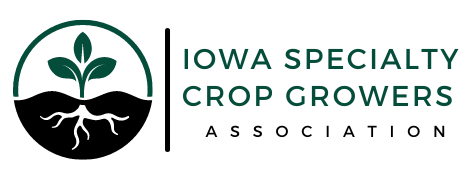Richard Jauron
Extension Horticulturist
515-294-3108
rjauron@iastate.edu
Some plants grow well but don’t set fruit well, and this could happen because of a range of issues. A horticulture specialist with Iowa State University Extension and Outreach offers advice on fruit set issues. For information on your specific plant questions, contact hortline@iastate.edu directly.
Tomatoes
Unfavorable weather conditions are the primary reason for blossom drop on tomatoes. High daytime temperatures (above 85 degrees Fahrenheit) and low nighttime temperatures (below 55 F) interfere with pollination, causing blossom drop. Optimal growing conditions for tomatoes are daytime temperatures of 70-85 F. (Cherry tomatoes set fruit over a wider temperature range than most large-fruited tomato cultivars.) Strong winds and dry soil conditions also may contribute to blossom drop. Strong winds desiccate flowers, while dry soil conditions stress tomato plants.
Favorable weather and good care should result in good fruit set. Deeply water tomato plants once a week during dry weather.
Squash
Squash and other vine crops are monoecious. Monoecious plants have separate male and female flowers on the same plant. Male and female flowers are similar in appearance. However, female flowers have small, immature fruits at their base. Pollen is transferred from the male to the female flowers by bees and other pollinators. When properly pollinated and fertilized, the female flowers develop into fruit. The first flowers to appear on squash and other vine crops are predominately male. As a result, fruit production is poor when the plants begin to flower. The squash plants should begin producing a good crop within a few weeks as the number of female flowers increases.
Unfavorable weather and the use of insecticides also can affect fruit set on vine crops. Cool, rainy weather during bloom reduces bee activity. Fewer bees visiting the garden results in poor pollination and poor fruit set. Apply insecticides in the garden only when necessary to avoid harming bees and other pollinators.
Lima beans
Lima beans are not well adapted to growing conditions in Iowa. Lima beans grow best when temperatures are between 70 and 80 F. They also require 1 inch of water per week (either from rain or irrigation) during blossoming and pod development. Hot, dry conditions during blossoming may cause many of the flowers to drop off without setting pods. Excessive nitrogen fertilization promotes lush growth, but may also inhibit pod formation.
Bush-type cultivars usually perform better than pole cultivars in Iowa. Suggested bush-type cultivars include ‘Fordhook 242’ (large greenish white seeds, heat tolerant), ‘Eastland’ (3-inch pods contain dime-sized, greenish white flat beans), and ‘Henderson Bush’ (small white seeds, early maturing).

